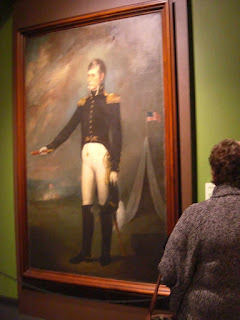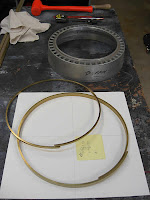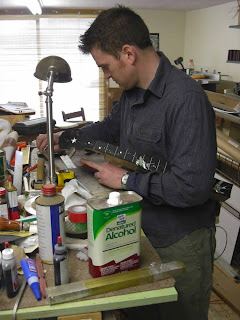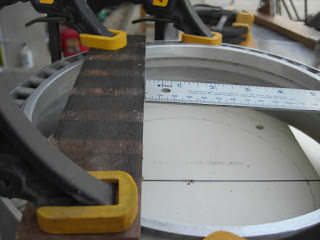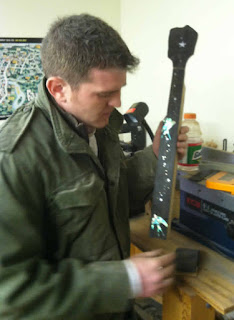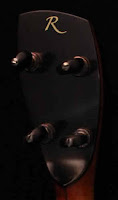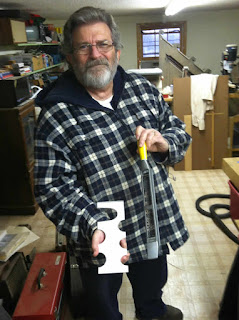 |
| Monty at the drill press, polishing his brackets |
As soon as we got to the shop, Monty began polishing the brass brackets that he had fabricated last weekend. This involved holding them with the small threaded handle that he made and pressing them against a cloth polishing wheel mounted in the drill press. He continuously applies a wax impregnated polishing compound and rotates the individual brackets to get all sides shiny. It was tedious work, but the results, shown below, were spectacular!
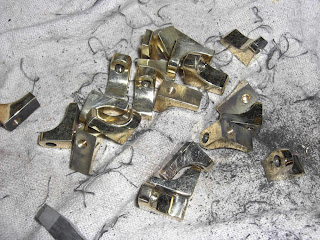 |
| The finished brackets |
As Monty was polishing, I was upstairs reshaping my neck (again). I felt that the neck was too "broad shouldered" especially at the narrowest point below the peg head. So I attacked it with a course wood rasp and rounded it substantially. Of course that required that I resand it and progress from 80 grit sandpaper down to 400 grit. I also had to re-stain the neck and blend the stain in with the remaining stain where I hadn't reshaped it.
A few weeks ago, I had seen a close up photo of a feature on a Romero banjo that I really liked. It was a sculptured relief around the section of the neck where it widens to accommodate the 5th string. So I took some small chisels in hand and duplicated it to the best of my non-woodcarver ability. Here's the result. I'm very pleased with the outcome.
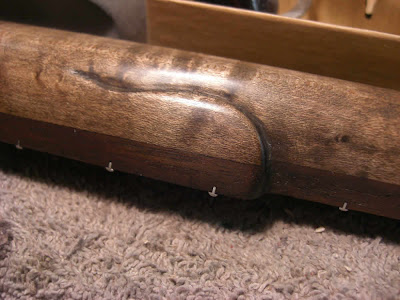 |
| The relieved area around the 5th string |
Then came the moment of truth. It was time to set up our alignment jig and drill the hole in the heel of the neck that will ultimately accommodate the dowel rod and attach the neck to the rim of the banjo. The alignment and position of this hole is critical to the position of all the pieces -- strings, frets, bridge. It is the one structural detail that drives all others.
The technique we planned to use deserves some explanation. We would first set up the jig to hold the neck in correct alignment with the "pot." Then we would carefully determine the centerline of the rim and mark the point on the tailpiece end of the rim where the dowel rod will terminate. Using an 18" long drill bit, we will drill all the way through from the tailpiece attachment point, through the opposite side of the pot, and 1-1/2 inches into the heel of the neck. Here's a sketch:
 |
| The drilling setup |
The bit now drills a 5/8" hole through the neck-attaching side of the rim and into the heel of the neck. Of course our dowel rods have a 5/8" dowel end that will eventually be glued into this hole.
That's the plan.
 |
| A Banjo Boy dilemma... |
This is a real challenge for the Banjo Boys. Tune in next week.






